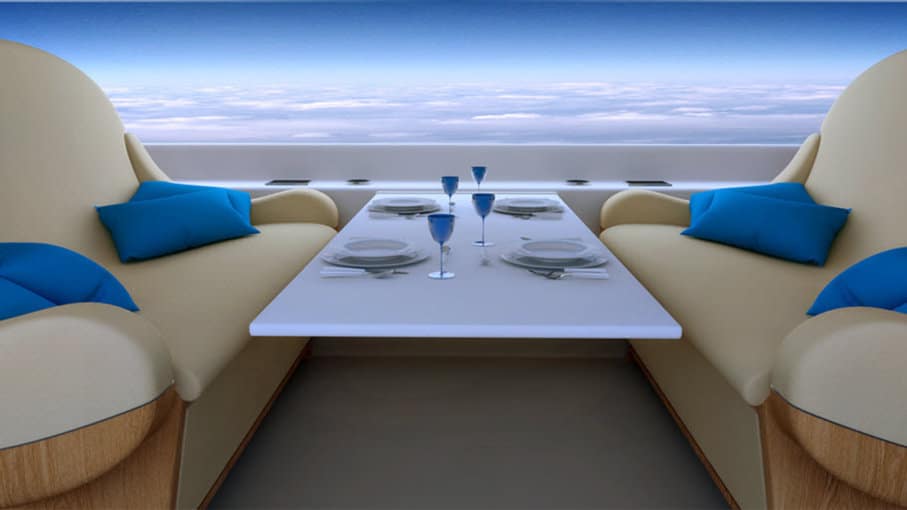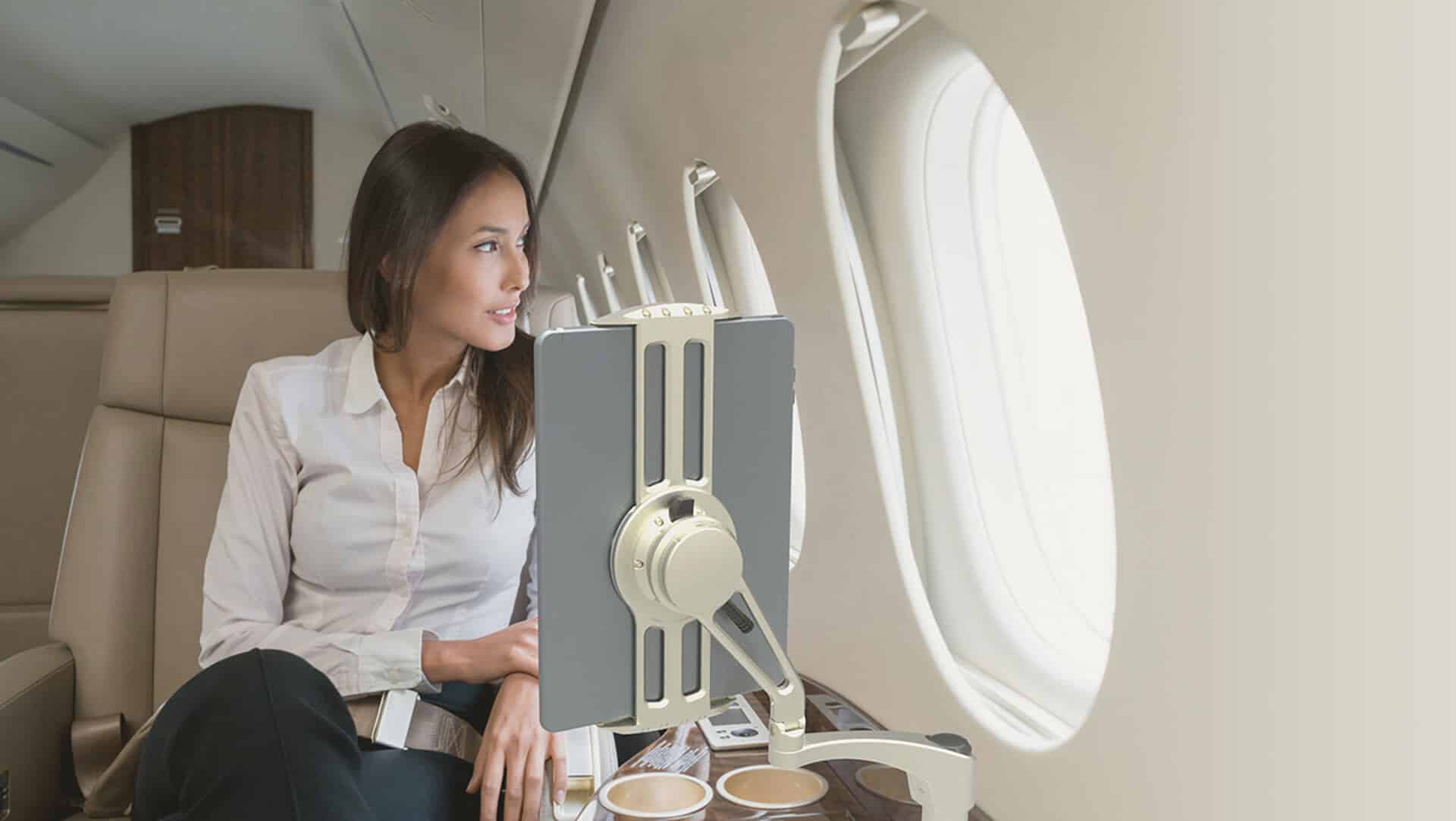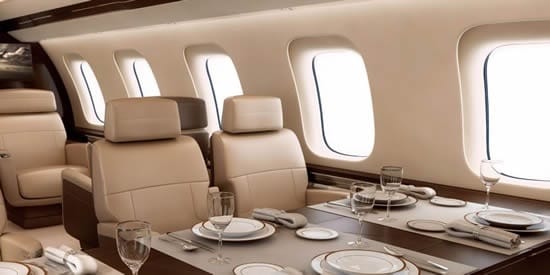Technology
Combined Vision System
Gogo to Launch 5G network
Gogo, the leading global provider of broadband connectivity products and services for aviation, has announced its plans to build a 5G network for aviation.
The new air-to-ground (ATG) network will be designed for use on business aviation aircraft, commercial regional jets, and smaller mainline jets operating within the contiguous United States and Canada. Gogo expects the network to be available for business and commercial aviation in 2021.
“We expect to launch Gogo 5G at the same time as the terrestrial telecommunications companies are deploying the same generation of technology on the ground – a first in the inflight connectivity industry,” said Oakleigh Thorne, CEO of Gogo. “Gogo 5G is the next step in our technology evolution and is expected to deliver an unparalleled user experience, pairing high performance with low latency and network-wide redundancy.”
Gogo will build the 5G network on its existing infrastructure of more than 250 towers and will use unlicensed spectrum in the 2.4GHz range, along with a proprietary modem and advanced beamforming technology. Gogo’s 5G infrastructure will support all spectrum types (licensed, shared, unlicensed) and bands (mid, high, low), and will allow Gogo to take advantage of new advances in technology as they are developed. Similar to how wireless carriers provide redundancy across their networks, Gogo will continue to employ its 3G and 4G networks throughout the continental US and in Canada that will provide backup to the 5G network when needed.
When compared to satellite technologies, ground-based network technologies in general deliver certain operational advantages – specifically lower cost of operation and lower latency. Gogo is committed to provide easy upgrade paths to 5G for existing Gogo air to ground customers.
Windowless Aircraft
Windowless Airplanes: The Future of Flight?
Many of us still like to gaze out in wonder from those little portals. A survey by Quartz in 2014 found that more than half of Americans prefer having a window seat on an airline, though people who fly more than once a year are more evenly split.

That’s why you may be surprised to learn that for decades, aircraft designers have been contemplating planes with video screens instead of passenger windows. In 2014, for example, the UK-based Centre for Process Innovation unveiled a design for a windowless airliner, in which the entire interior of the cabin would be lined with thin, flexible high-definition video screens that would provide lighting and entertainment, as well as a more expansive view of the outside.
Dubai’s Virtual Windows
Last April, Dubai-based airline Emirates debuted Boeing 777s with enclosed private suites equipped with “virtual windows” to provide a view of the outside from the middle of the plane.
“The virtual windows were installed for First Class suites located in the middle aisle as they are fully enclosed suites with floor-to-ceiling doors and passengers would not be able to view the windows on the side of the aircraft,” an Emirates public relations official, Jerome Demare, explains via email. “These virtual windows project the view from outside the aircraft using real time camera technology. The cameras are placed in strategic locations to offer passengers a real-time view outside the aircraft. The actual view is determined by which side of the aircraft the entrance to the suite is; right or left, that is the view that will appear in the center suites. The cameras are high resolution devices which offer a very clear, wide view of the outside. The virtual window provides a sharp, clear, realistic view of what’s outside – anecdotally, passengers have told us they prefer the view to that of ‘real’ windows.”
Emirates’ virtual windows got a rave review from travel website The Points Guy.
In a BBC News article, Emirates president Sir Tim Clark was quoted about the future possibility of planes without windows, but Demare said that “there are no current plans for a windowless airliner.”
But an aircraft manufacturer does aim to go windowless, on a smaller scale. For the past several years, a privately owned Boston-based company, Spike Aerospace, has been working to develop the Spike S-512, an 18-passenger supersonic business jet filled with cutting-edge technology that will enable it to cut travel times significantly, without excessive fuel consumption and loud sonic booms. And it will do all that without passenger windows.
The aircraft’s design will include a “multiplex digital cabin,” Spike Aerospace president and chief executive officer Vik Kachoria said in a phone interview. Instead of gazing through the usual small portal windows, passengers will be able to watch a pair of 20-foot-long (6.096-meter) digital video screens that will stretch the length of the cabin on either side of the aircraft. Multiple ultra-high definition cameras mounted on the exterior of the plane will provide 4K video, which the aircraft will stitch together, using special software developed by Spike Aerospace.
Kachoria says the system will provide “beautiful, full-length camera feeds from various angles. Whatever image you want to see can be displayed. You can see left or right, in front of the plane or behind it, looking down or up into the sky. It’s more of a panoramic view than the very limited view that you see out of a porthole window.”
The Benefits of Windowless Airplanes
Eliminating conventional acrylic glass windows from the aircraft has other advantages as well, Kachoria says. By insulating the fuselage as well, for example, it would be possible to reduce noise from the engines. It also would strengthen the aircraft and make it safer. “Wherever you have a hole is a structural weakness,” he said. “You’re reducing any weak spots.” (Airliner windows have to be designed to be tough enough to withstand the stresses of flying, as this 2003 Federal Aviation Administration circular details.)
Besides providing a more expansive view, the system also will enable passengers to choose other content. It also will be capable of utilizing geolocation and displaying augmented reality data about the landscape that the plane is flying over. “We have partners working on content for the screens,” Kachoria says.
If they’re not interested in the view, passengers also will be able to use the screens to do other things. “You can watch videos or it, or do a PowerPoint,” Kachoria says. “You can put up a movie if you want, or just dim the lights.”
The aircraft’s pilots still will have a conventional window in the cockpit, as well as synthetic vision technology, according to Kachoria.
Kachoria says that Spike Aerospace has several more years of engineering to complete on the aircraft, and then has to go through the testing and certification process. He envisions delivering the first jet without conventional passenger windows in 2025.
Initially, only corporate executives and people wealthy enough to afford a private jet will be able to enjoy Spike Aerospace’s windowless flying experience. But Kachoria expects that the innovative technology eventually will find its way into regular airliners as well.
3D Viewer - VIASAT

VIASAT – KA BAND
Unlock the Value of More Viasat is bringing its internet service with the fastest speeds and best-in-market pricing to the business jet market. With more Ka-band capacity than any other in-flight Wi-Fi provider, Viasat enables business and private jet users to unlock the value of more… by getting a more powerful performing in-flight internet service that delivers more speed, more performance, and more reliability—globally. Viasat’s system is built for tomorrow’s internet, empowering users to do more on board.

Aviation’s first circadian rhythm-based cabin lighting technology
Bombardier has unveiled the Soleil lighting system, the industry’s most advanced cabin lighting technology, on the award-winning Global 7500 business jet.
Designed and developed exclusively for the Global 7500, the innovative Soleil lighting system is aviation’s first circadian rhythm-based cabin lighting technology fully integrated with the Flight Management System, and it introduces the revolutionary Dynamic Daylight Simulation feature, which can help combat jet lag.
Dynamic Daylight Simulation uses specific combinations of red and blue light wavelengths that studies have shown to help stimulate or suppress the production of melatonin – which assists in regulating the sleep-wake cycle and can help contribute to synchronizing passengers’ circadian rhythms to the time at their destination.
The Soleil lighting system is fully integrated into the Global 7500 aircraft’s nice Touch cabin management system, and can also be customized to a passenger’s preference for either extended sleep or productivity via the system’s unique circadian adjustment setting. The Soleil lighting system can also conveniently be programmed to schedule the optimal times for meal services, allowing the cabin crew to better prepare and plan more efficiently.
Incorporating twice the number of individual LEDs than other cabin lighting methods, the Soleil lighting system delivers the most vivid and high-definition color rendering index (CRI) of any lighting system available today. The system is ideally suited to the Global 7500 aircraft and its long-range mission profile.
Cabin Tech: It Just Keeps Getting Better
Business jet cabin technology has been advancing rapidly for years, and the progress shows no signs of slowing. Improvements in entertainment, ground-to-air connectivity, and even onboard air and water quality are making your ride better than ever.
Consider, for example, cabin pressure altitude, which is critical for passenger health. At cabin altitudes higher than 8,000 feet, you can feel fatigued, desiccated, and even ill from oxygen deprivation. Gulfstream’s newest aircraft, the G600, can maintain a 4,850-foot cabin altitude at its maximum altitude of 51,000 feet, far above the weather and most traffic. The compressed air in the cabin, which is completely replenished every two minutes, reduces the effects of jet lag.


